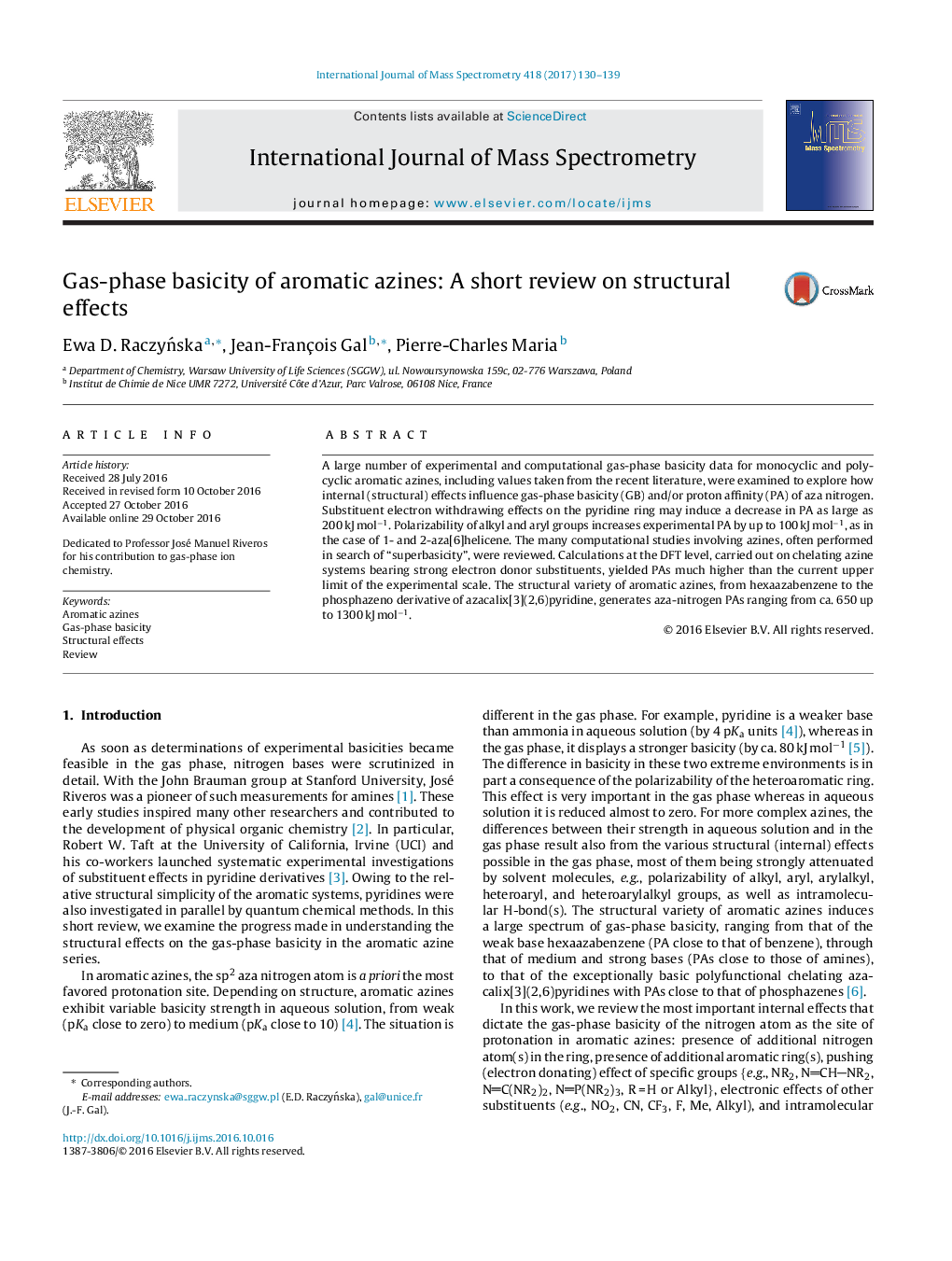| Article ID | Journal | Published Year | Pages | File Type |
|---|---|---|---|---|
| 5134226 | International Journal of Mass Spectrometry | 2017 | 10 Pages |
â¢Structural variations in azines generate PAs ranging from 650 up to 1300 kJ mol-1.â¢The basicity of some polycyclic aromatic azines is close to those of superbases.â¢(R2N)3P = N strongly boost the PAs of pyridines and azacalix[3](2,6)pyridines.â¢The lowest PAs are displayed by C5F5N and N6 (hexaazabenzene).
A large number of experimental and computational gas-phase basicity data for monocyclic and polycyclic aromatic azines, including values taken from the recent literature, were examined to explore how internal (structural) effects influence gas-phase basicity (GB) and/or proton affinity (PA) of aza nitrogen. Substituent electron withdrawing effects on the pyridine ring may induce a decrease in PA as large as 200Â kJÂ molâ1. Polarizability of alkyl and aryl groups increases experimental PA by up to 100Â kJÂ molâ1, as in the case of 1- and 2-aza[6]helicene. The many computational studies involving azines, often performed in search of “superbasicity”, were reviewed. Calculations at the DFT level, carried out on chelating azine systems bearing strong electron donor substituents, yielded PAs much higher than the current upper limit of the experimental scale. The structural variety of aromatic azines, from hexaazabenzene to the phosphazeno derivative of azacalix[3](2,6)pyridine, generates aza-nitrogen PAs ranging from ca. 650 up to 1300Â kJÂ molâ1.
Graphical abstractDownload high-res image (173KB)Download full-size image
